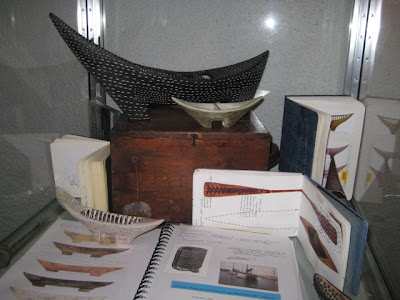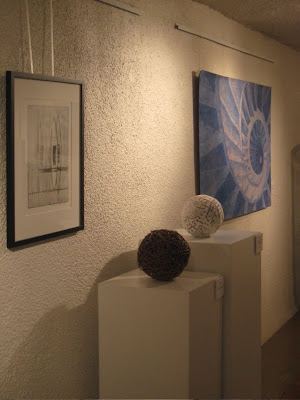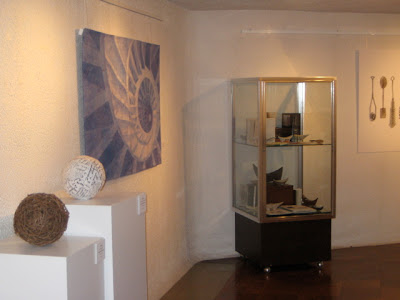

These images are from the tableaux I created in the glass display case in my recent exhibition "Transition" in Kansas City. The interplay between the journals, the maquettes and the work was very inspiring and allowed people a glimpse into my working process, especially how integral journaling and visual journals are to how I work. Solo exhibitions are a wonderful opportunity to step back and review one's own evolution of their work. Generally work is boxed up in the studio and so I do not have the opportunity to see the evolution and progression of the work. In this case, it is a new body of new ideas and materials that have been percolating in the journals for years. There have been many tangents and backslides as I exlore different avenues, the show validated I am headed in the right direction. It was also very validating as a teacher of Creative Visual Journaling to step back and see how what I practice echoes what I teach.














